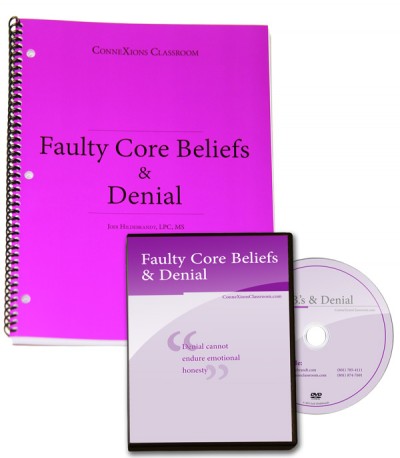Ever notice that fear gets worse the more you focus on it? I know someone who starts worrying he has cancer every time he notices a change in his body. At first, he’s only mildly concerned, but after an hour he worries himself sick (keep in mind, nothing has changed except his thoughts).
Psychology of Fear
Fear plays a trick on our psychology: we are prone to recoil from the fear and place the “blame” on the wrong thing. For example, I really don’t like spiders. When I find one in my house, my first reaction is to blame it for being “scary.” My reaction is to control the thing I fear (i.e. kill the spider) rather than understand the fear and figure out what it’s telling me. That’s all well and good when the fear is a spider (which can be controlled relatively easily). But what do we do when the fear is something more severe? Let’s look at the fear cycle with the example of my friend who is worried about having cancer.
The Fear Cycle
Step 1: Perceive an experience.
He notices a change in his body. When we perceive an experience, we get to decide what that experience means. However, our minds are incredible: the brain uses every perception and experience (especially extreme ones such as traumatic, spiritual, sexual, exciting, etc.) to form response patterns for future use. What this means is that if we don’t consciously choose what an experience means, our built-up perception patterns will come racing in and label it for us, like racehorses bursting out of the gate. We’ve got to be conscious of the thinking patterns we have which are erroneous, and “cut them off at the pass.” When we do this consistently, we reprogram those thinking patterns. Consciousness brings us into Truth and Reality.
Step 2: Fear
My friend often doesn’t become conscious, and so his perception of a change in his body becomes “I have cancer” in his mind. Naturally, anything physically threatening such as cancer induces fear. However, he doesn’t actually know he has cancer, so he is fearing a phantom.
Step 3: Obsession
When a fear is based on a false reality or on something we think we know but we actually don’t, there’s a perceptive “hole” that the mind tries to fill. We think through the scenario again and again, trying to fill in the “gaps,” each time seeing the experience through a thicker and darker lens of fear. This is called obsession. My friend will check and re-check whatever area of his body he felt a change in, looking for the slightest alteration. Often, he will spend days allowing this to interrupt his normal work.
Step 4: Control
How does one control cancer? Well, really you can’t. But if my friend were to become more extreme in his fear/control cycle, he might attempt to control his perception by paying for extensive cancer screenings several times per year, or by repetitively calling a family friend who is a doctor and asking about cancer symptoms. The trick fear plays is that we attempt to control the perception rather than deal with the reality. When we get into Reality, erroneous fears cannot continue. So, to control the perception of having cancer (as false as that perception might be), my friend (if he were to allow the fear cycle to continue and intensify for an extended period of time) would have to go into denial to prevent the “scary” possibility from ever touching him.
We can remain in this perception / fear / obsession / control loop for days, weeks, months, or years. Even our whole lifetime. Often, however, the pressure becomes too great, and we “release.”
Step 5: Release
If my friend got too wound up around having cancer, eventually he might say, “I’m sick of living this way. Forget it. I’m never going to worry about cancer again. I don’t care if I get it or not. I’m going to eat what I want, do what I want, and enjoy my life.” If he went into release behaviors, he would go to the opposite end of the spectrum. He might stop taking care of his body, or eat terribly unhealthy foods (especially if his dietary regimen was motivated by his fear), or laugh at people who think they have cancer, or stop exercising (which was being motivated by his fear), and so forth. He might begin taking anti-anxiety medications or begin using some kind of drugs or chemicals to alter his mood and reduce stress.
Step 6: Pain (& Shame)
Were my friend to do this, he would initially feel “free” from the worry and stress and “battle” he was fighting with his fear. However, now his “release” behaviors have violated his beliefs. He believes in taking care of his body, he does not believe in using mind-altering drugs, and underneath it all he still has this pattern of fear, which he is hoping his release behaviors will stop.
Step 7: Here we go again
His release behaviors violated his beliefs, which will cause him to feel shame, which, in turn, increases his propensity to fear. In addition, his body is now weaker and sicker, and he has a higher possibility of actually getting cancer! These outcomes will set him up to perceive his next experiences in the exact same way, and the cycle will continue. Even if the specific fear changes, the pattern of thinking will be perpetuated in some area of life until it is addressed.
Are you dizzy yet? Can you see how quickly a little lie-a little distortion-leads to fear and confusion? Can you see how quickly it goes “all over the place” and creates chaos?
Care to share a great example of the fear cycle in your life? We’d love to hear it! Go ahead and put it in the comments below.






